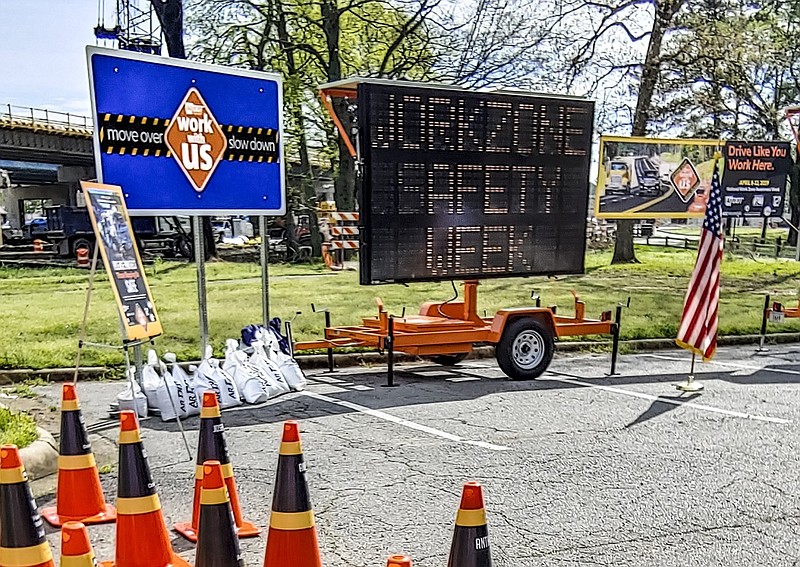Arkansas State Police troopers and Highway Police officers will soon have real-time access to camera images to help them identify and penalize drivers who speed through work zones, transportation officials announced Wednesday.
Gov. Sarah Huckabee Sanders this month signed into law Senate Bill 481, now Act 707, which allows for "automated enforcement devices" to capture images of speeding vehicles traveling through designated work zones.
The bill was sponsored by Sen. Kim Hammer, R-Benton, who said his awareness of how frequently motorists exceed the speed limit while passing through work zones was heightened by the number of crashes he was seeing along Interstate 30 in Saline County. In particular, he said he was seeing a high number of speeding-related crashes along a 3-mile-long construction zone.
"That's ultimately what led to where we are today," he said Wednesday. "I was surprised at the number of accidents we were seeing there, so we decided to try to come up with a solution."
State Rep. Lanny Fite, R-Benton, was the House sponsor of the legislation.
The law will go into effect in August, the state Department of Transportation said in a news release Wednesday.
Once an image is snapped, it will be transmitted to a law enforcement officer parked at the end of the work zone, who will have the authority to pull over the driver and either issue a warning or write a ticket, according to the release.
Under state law, fines are doubled for those who are caught speeding in designated zones where workers are present.
Transportation officials said all data and images from the devices will be automatically deleted if no warning or ticket is issued to the driver.
An amendment to the bill states that automated enforcement device data that isn't used by law enforcement "shall not be retained by a municipality or a department of state government" for any reason.
"These are not cameras that send drivers tickets by mail," Arkansas Highway Police Chief Jeff Holmes said in the news release. "This equipment simply allows officers to better enforce speed limits within work zones in real-time, keeping our drivers and workers safer."
Under Arkansas Code 27-52-110, an automated enforcement device is one that is designed to detect a speeding violation in addition to snapping an image of the vehicle.
Previously, the law allowed the devices to be used by police in school zones and railroad crossings. Act 707 added highway work zones to that list, while also removing a requirement that the officer be "present with the automated device" when it's used.
Hammer said law enforcement officers have been dressing up as highway workers and catching speeders in the act. The problem with such a tactic is that they are having to pull over drivers in the middle of the work zone, which further clogs traffic and puts the law enforcement officers and others at risk of injury or death.
By using a device and allowing a law enforcement officer to park outside the zone, it makes pulling over drivers easier and safer for police agencies, he said.
"It's better to allow police to use less manpower for this," Hammer said. "It gets them outside the construction zone and that's just better for everybody."
CORRECTION: Arkansas state Rep. Lanny Fite, R-Benton, was the House sponsor of legislation filed in the Senate by Sen. Kim Hammer, R-Benton, allowing for “automated enforcement devices” to capture images of speeding vehicles traveling through designated work zones. An earlier version of this story incorrectly identified the House sponsor.
